The landscape of healthcare design in Canada is constantly evolving, frequently being pushed forward by regional initiatives that address the specific needs of the areas they serve. Annually, a significant number of patients in Canadian hospitals contract infections that contribute to increased illness and death, while also imposing a financial burden on the healthcare system. As per the data from the Public Health Agency of Canada, around 220,000 patients acquire infections during their hospital stays each year, resulting in approximately 8,000 fatalities. These healthcare-associated infections (HAIs) are both preventable and quantifiable, and they stand as the most frequently reported adverse events in the global healthcare sector.
In 2011, in response to safety and cost concerns raised by governments, health care professionals, and the public, the Canadian Standards Association (CSA) created the first edition Z8000 Canadian Health Care Facilities (HCFs) standard. Given the rising costs of capital spending on HCFs and the disappearance of dated provincial guidelines, it was clear that a national standard was needed to help improve patient safety and outcomes as well as the safety and well-being of HCF staff. Its primary goal was to improve the safety, effectiveness, and efficiency of healthcare facilities by focusing on five key principles: operations, accessibility, safety and security, infection control, and sustainability.
The first edition of Z8000 included requirements that challenged some of the accepted design practices at the time. Three notable examples were:
The average percentage of single patient rooms in hospitals before the new design was 15 per cent; that figure rose to 71 per cent in the new healthcare facilities.
Similarly, compliance to Z8000 requirements related to hand hygiene sinks and alcohol-based hand rub stations increased dramatically after the change in hospital design. For intensive care units in those healthcare facilities, hand hygiene sink compliance rose from 31 per cent to 90 per cent, with alcohol-based hand rub station compliance increasing from 57 per cent to 85 per cent. For the medical/surgical units of those healthcare facilities, hand hygiene sink compliance increased from 40 per cent to 84 per cent, while alcohol-based hand rub station compliance increased from 66 per cent to 82 per cent.
Source: https://www.csagroup.org/
In 2011, in response to safety and cost concerns raised by governments, health care professionals, and the public, the Canadian Standards Association (CSA) created the first edition Z8000 Canadian Health Care Facilities (HCFs) standard. Given the rising costs of capital spending on HCFs and the disappearance of dated provincial guidelines, it was clear that a national standard was needed to help improve patient safety and outcomes as well as the safety and well-being of HCF staff. Its primary goal was to improve the safety, effectiveness, and efficiency of healthcare facilities by focusing on five key principles: operations, accessibility, safety and security, infection control, and sustainability.
Infection Control in Health Care Facility Design
The CSA Z8000 standard offers a comprehensive, Canada wide recognized baseline for the planning, design, and construction of hospitals and other healthcare facilities based on leading research linking better facility design to positive patient outcomes. It was based on the best available knowledge and evidence at the time, gathered from multiple sources, and further refined following an accredited standards development process. It was designed to help ensure improved outcomes for those receiving care in a healthcare facility where design and construction play a role.The first edition of Z8000 included requirements that challenged some of the accepted design practices at the time. Three notable examples were:
- The requirement for single patient rooms (and separate washrooms in the exceptional cases where a room is shared);
- Dedicated provisions for human waste disposal. One washroom with a sink and toilet per patient unless in services in which a patient will not use a toilet.
- The requirement for deeper and better designed hand hygiene sinks.
Significant impact of CSA Z8000
In terms of hospital design features, the survey results showed an increase in compliance to Z8000 requirements related to both single-patient rooms, and the design and availability of hand hygiene sinks and alcohol-based hand rub stations.The average percentage of single patient rooms in hospitals before the new design was 15 per cent; that figure rose to 71 per cent in the new healthcare facilities.
Similarly, compliance to Z8000 requirements related to hand hygiene sinks and alcohol-based hand rub stations increased dramatically after the change in hospital design. For intensive care units in those healthcare facilities, hand hygiene sink compliance rose from 31 per cent to 90 per cent, with alcohol-based hand rub station compliance increasing from 57 per cent to 85 per cent. For the medical/surgical units of those healthcare facilities, hand hygiene sink compliance increased from 40 per cent to 84 per cent, while alcohol-based hand rub station compliance increased from 66 per cent to 82 per cent.
Conclusion
Planning, designing and constructing hospitals and health care facilities is a intricate process and the Z8000 standard helps address concerns specific to health care facility design. By following CSA Z8000, you are demonstrating a commitment to evidence-based practices and the highest standards in healthcare facility design and construction, ultimately contributing to the well-being of patients and healthcare staff while also helping to meet regulatory requirements and industry best practices.Source: https://www.csagroup.org/

